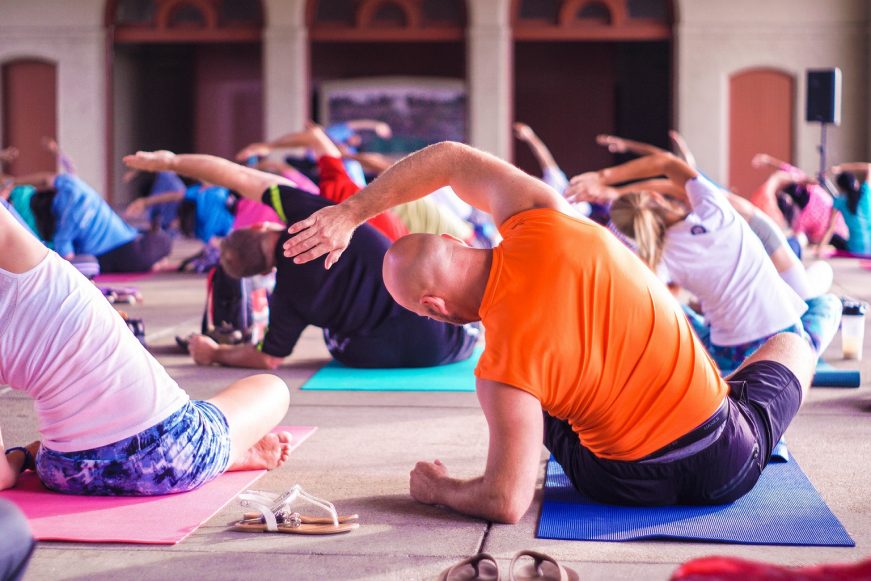For as many years as I can remember, the question I’m asked most about exercise is: ‘Which is the best exercise for weight loss?’ Technically the answer is cross country skiing, but in reality, the correct answer is: ‘The exercise you most enjoy doing’, because that’s the only one you are likely to stick to.
In reality, we are always using a combination of both aerobic and anaerobic ‘systems’. Humans are aerobic creatures – we cannot survive without oxygen – but we also have the ability to switch energy systems according to the demands on our body and which fuel supplies we have available.
An aerobic activity such as power walking, jogging or cycling will become anaerobic as you get more tired and your heart has to work harder to supply the oxygen. At the beginning of a 30-minute workout, assuming you have warmed up correctly and raised your heart rate gradually, you will be working mainly aerobically. After about 15 minutes, if you are beginning to feel a little more challenged, the ratio will change slightly – you will be using less fat and oxygen as your circulation is struggling to keep up delivery, and relying more on glucose. If by the end of 30 minutes you are wiped out, you will be in your anaerobic zone (relying almost totally on glucose), which you can’t sustain for more than a few minutes. This is when athletes ‘hit the wall’. In a fit individual this takes a marathon to reach, but in a very unfit individual it can be reached after as little as a few minutes of activity.
In terms of burning fat, you burn fat when you work aerobically, but there is also an energy cost after you’ve finished exercising that also burns fat, and this is determined by the intensity of the workout. In simple terms, the harder you work out during your exercise session, the more fat you burn afterwards.
Ideally, you will combine a mixture of different activities so you can work aerobically and also build lean muscle mass. Keep in mind that relaxation and de-stressing should also make up part of your regime. When designing your activity or exercise regime it really has to be something you enjoy. Even a game of badminton twice a week or a Zumba class will burn calories and get you moving.
AEROBIC ACTIVITY: moderate to fast walking, jogging, gentle cycling, etc.
ANAEROBIC ACTIVITY: running, cycling faster or up hills, etc.
SPECIFIC RESISTANCE TRAINING: using weights
RELAXATION & DE-STRESS: yoga, meditation, etc.
Anaerobic exercise in particular has been shown to be beneficial for boosting thyroid function – specifically when working at 70 per cent or above of your maximum heart rate. So short bursts of intense activity, such as running and cycling (assuming you are fit enough) are beneficial as part of your overall exercise regime. This is something you can work up to gradually if your fitness levels are currently low. A mixture of high and low intensity exercise on different days will yield the best results.

Resistance training, i.e. with weights, will increase your metabolic rate so you burn more calories, even when you are not exercising. Resistance training increases your lean body mass (LBM), which is made up primarily of muscle. Always remember this: the only cells in your body that can burn fat are your muscle cells, so if you increase the strength and efficiency of your muscles (your LBM), your ability to burn fat increases, even when you are not exercising. This is so important it is worth repeating: only muscles burn fat!
So, any exercise regime designed to promote fat loss must include some form of resistance exercise that will replace some of the natural muscle wastage that comes with age and inactivity, if you can increase your muscle density, your everyday fat-burning potential is drastically increased. This is why on some programmes there is a visible change in body composition – your clothes become looser and you look and feel better, but there is negligible weight loss on the scales because you are losing fat mass and building muscle (LBM). This does level out after a while, but as long as you are losing inches, and starting to look and feel better, don’t worry if you are not losing as much weight as you think you should be. You are changing your body composition and that will lead to a long-term loss of fat.
The primary goal is to get fit and healthy, so your hormones can function properly to allow you to burn fat. Depending on your start point – how out-of-balance your system is – it may take a few weeks for this to correct, before you start to see significant weight loss. Be patient and focus on balancing your system first – when you do this, the weight will come off naturally.
Exercise
Write down three things you can do regularly that will increase your body’s ability to burn fat:
1.
2.
3.
Then say each one out loud and with emotion.
When I’m asked, ‘How hard should I work?’ my answer is, ‘As hard as you can for as long as you can, and as often as you can – depending on your fitness level’. That way you maximize the calories you burn when you work out, but also increase your metabolic rate on the days you are not working out. The important thing is to get moving!

In our private Members Area we have some really great workout videos with our fitness trainer Lindsey who has been in the business for over 25 years and she knows what works! There are some great short high intensity workouts along with some more relaxed stretching and core exercises. In fact everything you need to workout in your own home without fancy equipment or a gym membership. If you haven’t already joined the Members Area (you have to subscribe but get your first 2 months totally free when you purchase the Colour Fast Re-Set or The Placebo Diet program) then do it now as you will find loads of exercise videos to choose from, as well as motivational videos from me of practical tips and techniques to change your thinking, PLUS some great Colour Coded recipes! Go here to subscribe>>>>

